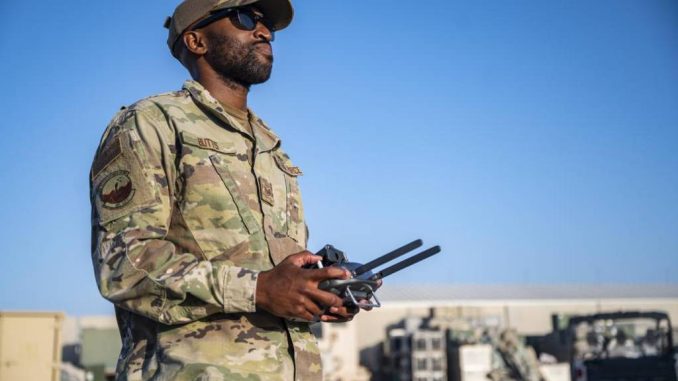
Security forces airmen at Ali Al Salem Air Base in Kuwait are stepping up their counter-Small Unmanned Aircraft Systems efforts following a series of drone strikes against U.S.-led coalition forces in Iraq and Syria carried out in the past few days.
U.S. Central Command’s boss, Marine Corps Gen. Kenneth F. McKenzie Jr., said last year that the proliferation of small, cheap drones is the “most concerning tactical development” since the rise of the improvised explosive device in Iraq.
RELATED
:quality(70)/cloudfront-us-east-1.images.arcpublishing.com/mco/CUPCAF43QRDZNMDPILZMY32QTE.jpg)
Both the Army and the Air Force have been working to bolster their counter-SUAS efforts, with the Air Force’s 386th Expeditionary Security Forces Squadron developing seminars to provide guidance on how to handle threats from such drones.
“The seminars are a one-on-one opportunity for general leadership to understand what our capabilities are,” Staff Sgt. Daniel Butts, the NCO in charge of counter-SUAS for the 386th ESFS, said in an Air Force press release. “These systems provide real time video or a picture and now leadership has a better understanding of what others could use it for.”
RELATED
:quality(70)/cloudfront-us-east-1.images.arcpublishing.com/mco/AZQZ6VWS5ZEMHKXHMCN5CNV5JM.jpg)
“We call it the ‘kill chain’….detect, track, identify and defeat,” Butts said. “The main thing is detecting so we’re able to see it and track it. Once we’re able to track it, we’re going to identify it, which is key to helping us understand if it’s hostile or not and to what extent. Then we can defeat it.”
The training takes place as U.S. forces in Iraq still face threats from so-called “suicide drones,” according to the U.S.-led coalition there.
On Monday, two armed drones were shot down as they headed toward a facility housing U.S. advisors at Baghdad airport. Then on Tuesday, two explosives-laden drones targeting an Iraqi military base housing U.S. troops in western Anbar province were again downed by base air defenses.
While the U.S. military officially ended its combat mission in Iraq in December, around 2,500 troops will remain in-country in an advisory role.
Rachel is a Marine Corps veteran, Penn State alumna and Master’s candidate at New York University for Business and Economic Reporting.



Be the first to comment